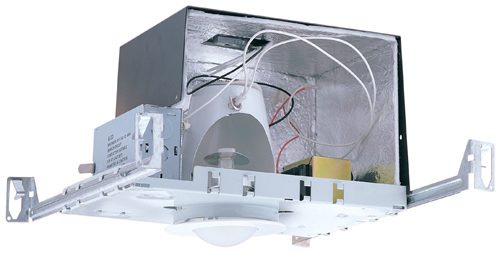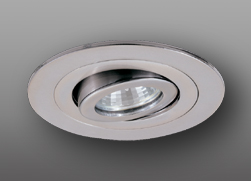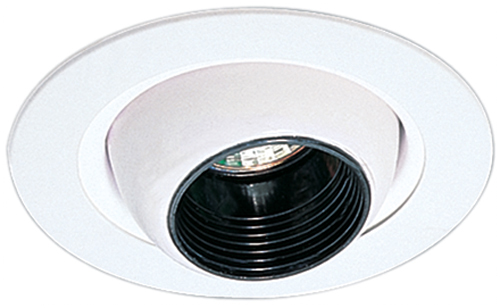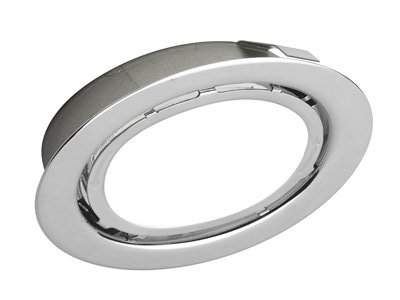
CA. #835032
(925) 595-5049
RECESSED CAN LIGHTING
Recessed can lighting adds an elegant touch to the appearance of any structure. This page will help to to decide on the type and style of recessed can lights you would like to install. Recessed can lights come in a variety of sizes and looks with some intended to shine straight down and others used to illuminate wall hung art work and other items of visual aesthics. The sizes of can lights offered today fall between 2"- 8" in diameter. The two and three inch can lights are considered miniature can lights and are usually used for illuminating small things like the inside of curio cabinets and the like. Four inch to six inch can lights are common for residential, as well as commercial interior applications. Any can light large than six inches is usually intended for commercial applications where a much larger amount of light is needed say for areas like hotel lobby's, and super market breezeways. The trend today, for residential applications, is smaller rather than larger with the idea being the smaller units are less intrusive visually. Six inch can lights were commonplace during the seventies and eighties, but now are considered passe'. It has been in the last decade or so that the trend toward smaller diameter can lights has really taken hold. The maximum wattage (translates to the amount of light output) of any can light is limited to the size of the largest bulb (lamp) that can be installed in the fixture, among a few other things we will discuss later this article. Four inch can lights seem to be a popular size for a couple of reasons.
- They do not stand out as much as larger ones do.
- The manufacturers of most can lights will offer in their 4" line a wide variety of 4" can light trims (the part you see when you look up at the light). This is not so true with 5" & 6" can lights.
There a few different types of four inch can lights.
- 4" line voltage incandescent- 120 volt
- 4" low voltage halogen- 12 volt
- 4" compact fluorescent
- 4" LED
Line voltage can lights use a lamp that is the same voltage as the circuit supplying power to the can light- residential line voltage can lights are 120 volt, and use traditional threaded base light bulbs. These fixtures are the least expensive of the three types of can lights. See http://www.elcolighting.com/categories/4-line-voltage-incandescent-recessed-lighting for examples of trims for these cans.
Low voltage halogen can lights utilize the same 120 volt supply circuit as line voltage cans do, but they have an internal transformer which transforms the supply voltage down from 120 volts to 12 volts. They use a low voltage (12 volt) MR-16 halogen lamp which is nothing like a traditional lamp. These fixtures are part of a line which includes a variety of trims. See http://www.elcolighting.com/categories/4-low-voltage-incandescent-recessed-lighting for some examples. These low voltage fixtures are very versatile, and with the proper trim can add a nice touch to your home, however they are a bit more expensive than their line voltage counter parts.
Compact fluorescent can lights utilize a special 'snap in' fluorescent lamp called a compact fluorescent lamp (CFL). These lamps have four metal pins on the bottom which snap into a connector mounted in the can light. This style of lamp is the result of energy management codes that just about every state now enforces. These lamps come in four different colors on the Kelvin Color Temperature Spectrum. See http://en.wikipedia.org/wiki/Color_temperature for an explanation. CFL's come in four specific color temperatures. They are 2700K, 3000K, 3500K, and 4100K. The 2700K lamp is closest to a traditional incandescent lamp, and the 4100K lamp is what you might know as cool white- it is whiter/bluer than the warmer yellowish light coming from an incandescent lamp. A 26 watt CFL recessed can light works very well in a kitchen where you will not likely want to dim the lights. Dimmable CFL fixtures are available but are more expensive than non-dimming CFL fixtures. See http://www.elcolighting.com/categories/4-vertical-residential-cfl-downlights for examples of trims for these fixtures.
LED can lights are quickly becoming very popular as they are highly efficient and are reported to last a very long time. A typical LED recessed can light installed today will likely outlive the home owner. However, these fixtures are somewhat costly and most home owners will opt for CFL fixtures.
Most states have energy management codes that require the use of high efficacy fixtures mounted in and on any residential structure. See http://cltc.ucdavis.edu/images/news/Title24/lighting-design-guide-version-2.pdf for an explanation of California's Title 24 Energy Management Code as it applies to residential lighting. An incandescent fixture is not considered high efficacy unless it is operated by a dimmer or a 'manual on vacancy sensor'. These two devices will help the fixture to be more efficient. Most compact fluorescent fixtures are considered high efficacy by their design and need no special provisions. Most LED recessed can lights are made to meet energy management code requirements and consequently need no special provisions either.
Recessed can lights that will be installed in attic spaces where there is insulation present must be IC (insulation compatible) and also must be made AT (air tight). ICAT, or ICA is a common acronym found on can light labels, and that is where your inspector will look to assure that your lights are energy management code compliant. Can lights installed in the ceiling between floors do not need to be ICAT as there is typically no insulation in those spaces.
As far as deciding on what fixtures to chose for your recessed can lights your thoughts will want to be along these lines, if you are like most people.
- Incandescent line voltage, or low voltage halogen for areas like bedrooms, hallways, living rooms, dining rooms, entry ways, family rooms and bathrooms.
- CFL fixtures in the kitchen- this will most likely be a code requirement in your state, as it is in most.
The recessed can light industry is vast, and the options are many. The suggestions mentioned here are merely for instructional purposes only. The appearance of the actual can light trim is subjective and everyone seems to have his/her own opinion. QLR Electric will be happy to assist you in selecting your recessed lights, and hopefully, after reading this you are a bit more confident in having that conversation.



ELCO EL1499ICA recessed can light- CA. Title 24 compliant
Example of modern looking trim.
Example of an outmoded trim- circa 1978. Most people are choosing something more like the picture above.

Miniature recessed light for use as under-cabinet light.